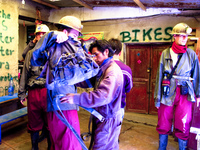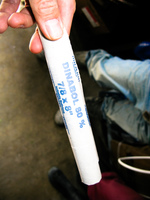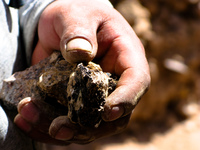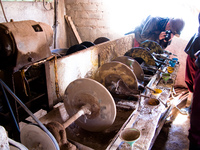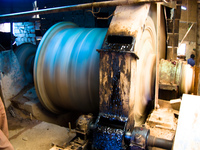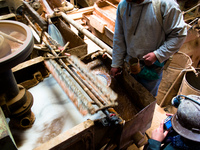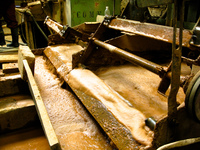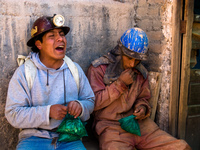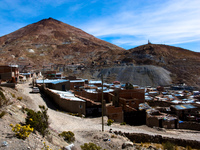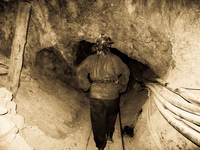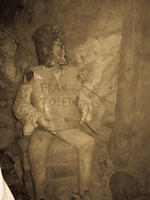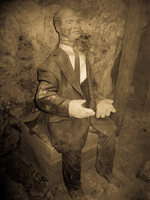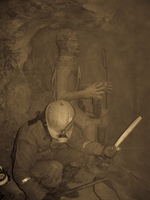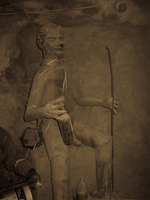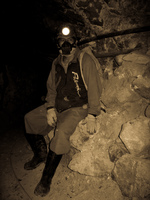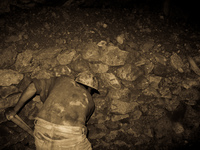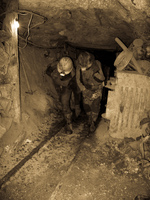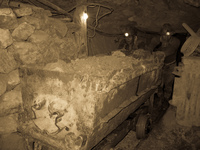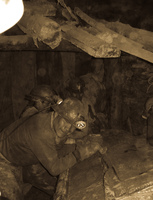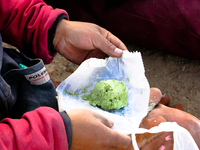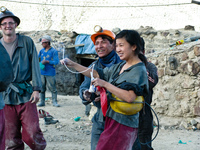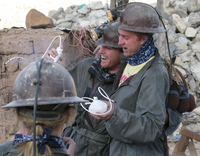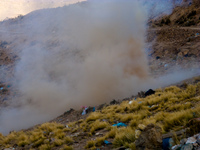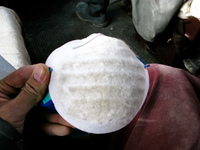mine tour
Mine Tour Compnay: Koala Tours Price: 100B About 15% of the fee goes to the miners Include transport to mine, jacket, pants, boots, hardhead and headlamp, mask not included Have to buy some gifts for the miners, didn't feel too safe with a whole van of dynamite gifts. The job of the miners are harsh, I know that without going down there.
Founded in 1546 as a mining town, Potosi soon produced fabulous wealth, becoming one of the largest cities in the Americas and the world with a population exceeding 200,000 people.
It is from Potos� that most of the silver shipped through the Spanish Main came. According to official records, 45,000 tons of pure silver were mined from Cerro Rico from 1556 to 1783. Of this total, 9,000 tons went to the Spanish monarchy. Indian laborers, forced by Francisco de Toledo, Count of Oropesa through the traditional Incan mita institution of contributed labor, came to die by the thousands, not simply from exposure and brutal labor, but by mercury poisoning: in the patio process the silver-ore, having been crushed to powder by hydraulic machinery, was cold-mixed with mercury and trodden to an amalgam by the native workers with their bare feet. The mercury was then driven off by heating, producing deadly vapors.
To compensate for the diminishing indigenous labor force, the colonists made a request in 1608 to the Crown in Madrid to begin allowing for the importation of 1500 to 2000 African slaves per year. An estimated total of 30,000 African slaves were taken to Potos� throughout the colonial era. African slaves were also forced to work in the Casa de la Moneda as ac�milas humanas (human mules). Since mules would die after couple of months pushing the mills, the colonists replaced the four mules with twenty African slaves. (Angola Maconde 1999)
In 1672, a mint was established to coin silver and water reservoirs were built to fulfill the growing population's needs. At that time more than eighty six churches were built and the city's population increased to nearly 200,000, making it one of the largest and wealthiest cities in Latin America and in the world.
After 1800 the silver mines became depleted, making tin the main product. This eventually led to a slow economic decline. Still, the mountain continues to be mined for silver to this day. Due to poor worker conditions (lack of protective equipment from the constant inhalation of dust), the miners still have a short life expectancy with most of them contracting silicosis and dying around 40 years of age. It is estimated that, in the past years of indigenous labour, roughly 8 million Indians died, "eaten" by the Rich Hill.
During the War of Independence (1809�1825, see History of Bolivia) Potosi frequently passed between the control of Royalist and Patriot forces. Major blunders by the First Auxiliary Army from Buenos Aires (under the command of Juan Jos� Castelli) led to an increased sense that independence was needed and fostered resentment towards him. During that occupation there was anarchy and martial excess, and Potosi became unfriendly to the point where it could not be defended.
This is the reason why they don't hand out mask for tourists. My mask (brought from Canada) was clogged as soon as I entered the mine. I almost suffocated in that high altitude mine. If you need a mask, bring a real mask (the one with a dirt filter).
When the second auxiliary army arrived it was received well, and the commander, Manuel Belgrano did much to heal the past wounds inflicted by the tyrannical minded Castelli. When that army was forced to retreat, Belgrano took the calculated decision to blow up the Casa de Moneda. Since the locals refused to evacuate this explosion would have resulted in many casualties, but by then the fuse was already lit. Disaster was averted not by the Argentinians who at that time were fleeing, but by locals who put the fuse out. Two more expeditions from Buenos Aires would seize Potos�. The city of San Luis Potos� in Mexico was named after Potos� in Bolivia. In the United States, the name Potosi was optimistically given to lead-mining towns of Potosi, Wisconsin and Potosi, Missouri, and also to the silver-mining town of Potosi, Nevada.

